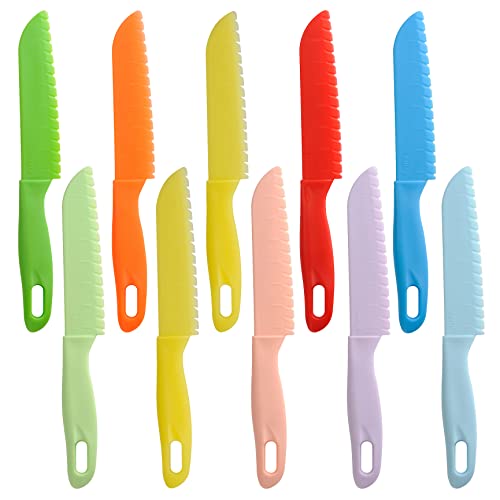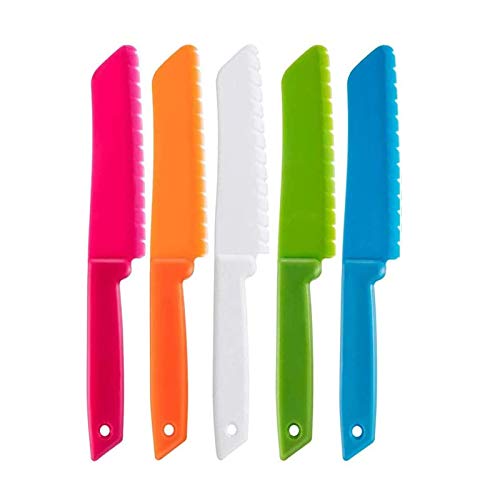Understanding the Importance of a Kids’ Knife for Kitchen Safety and Fun
Why a Kids’ Knife Matters
When we think about involving our children in cooking, safety is paramount. A kids’ knife is specifically designed to help young chefs develop their skills in a safe and engaging manner. Unlike traditional kitchen knives, these tools have features tailored to little hands, such as blunter edges that prevent serious cuts while still allowing them to chop, slice, and prepare food. Moreover, using a knife designed for children empowers them, boosts their confidence in the kitchen, and turns cooking into a fun learning experience.
Building Confidence and Skills
Engaging our kids in food preparation with a knife not only teaches them about cooking but also enhances their fine motor skills. As they master the use of a kids’ knife, they gain a sense of accomplishment. This can motivate them to explore healthy food options and develop a lifelong appreciation for cooking.
What to Look for When Choosing the Right Kids’ Knife
Safety Features
When selecting a kids’ knife, we should focus on safety features first. Look for a knife that has a rounded tip to minimise the risk of puncture wounds. Additionally, a non-slip handle can help tiny hands maintain grip, reducing the chances of accidents.
Blade Material and Construction
We recommend choosing knives made with sturdy yet lightweight materials. Stainless steel blades are often the best option as they can handle various tasks and are easy to clean. It’s also important to consider the weight of the knife; it should be light enough for your child to handle comfortably.
Size and Design
The size of the knife should be proportionate to your child’s age and hand size. A knife that feels too heavy or large can be challenging to control, leading to frustration or mishaps. Designs that feature fun colours or characters might also appeal to kids, making them more excited to use it.
Top Recommended Kids’ Knife Options for Young Chefs
Knife A: Ideal for Beginners
Knife A features a plastic blade that is perfect for younger children just getting started in the kitchen. Its lightweight design and ergonomic handle provide excellent control, making it suitable for simple tasks like slicing soft vegetables or spreading butter.
Knife B: For Aspiring Chefs
For slightly older kids, Knife B offers a stainless steel blade designed with a rounded tip and a non-slip handle. Its durability allows for various chopping tasks, and its size is ideal for those wanting to graduate from plastic knives.
Knife C: Multi-functional Tool
Knife C stands out for its versatility with a serrated edge, enabling kids to easily cut through bread and softer fruits without applying too much pressure. This knife encourages culinary exploration, giving your child the confidence to prepare a wider range of ingredients.
How to Teach Your Child to Use a Kids’ Knife Safely and Effectively
Start with the Basics
Before introducing a knife, it’s vital to teach your child basic kitchen safety rules. Emphasise the importance of keeping their fingers clear of the blade and demonstrating proper grip. Use informal yet informative language to help them understand why these practices are essential.
Supervised Practice
We should supervise our children, especially in the beginning. Allow them to practise under our guidance, reminding them of the safety protocols we discussed. Encouragement goes a long way; affirm their efforts and remind them of their progress as they become more skilled.
Gradual Independence
As our child gains confidence and skill, we can gradually step back, allowing them to tackle more complex tasks. This independence not only fosters growth in their culinary abilities but also helps them feel proud of their achievements in the kitchen.
Creative Activities to Enjoy with Your Kids’ Knife
Preparing Fun Snacks Together
We can turn snack time into an exciting activity by incorporating the kids’ knife. Have our children slice fruits like bananas or cucumbers, or use cookie cutters to shape sandwiches. Transforming everyday snacks into creative shapes fuels their enthusiasm for healthy eating.
Cooking Classes at Home
Another enjoyable approach is to organise mini cooking classes. Each week, we could focus on a different recipe that utilises their knife skills, like making homemade pizzas or veggie stir-fry. This not only enhances their cooking repertoire but also reinforces teamwork and shared responsibilities in the kitchen.
Themed Cooking Days
Hosting themed cooking days can serve as a fun family tradition. Whether it’s a day focusing on Italian cuisine where kids can slice their own toppings for pasta dishes or a bake-off with cupcakes, using their kids’ knife becomes an exciting part of the process, encouraging creativity and exploration.
















